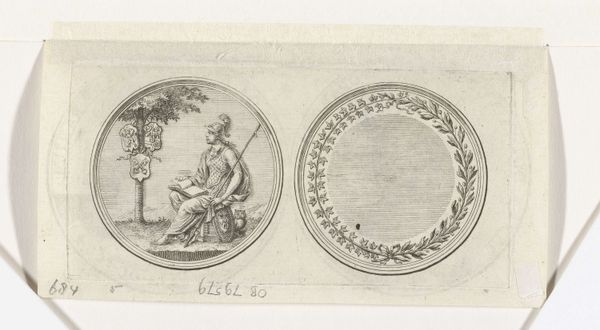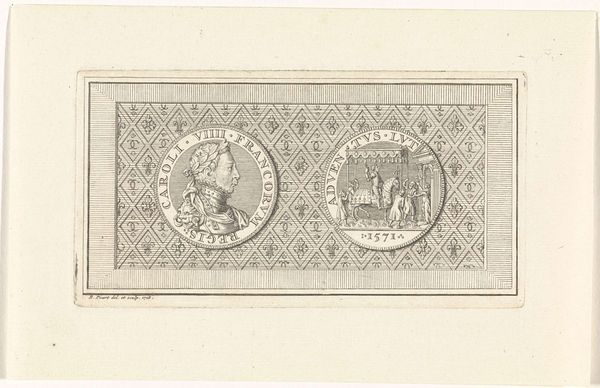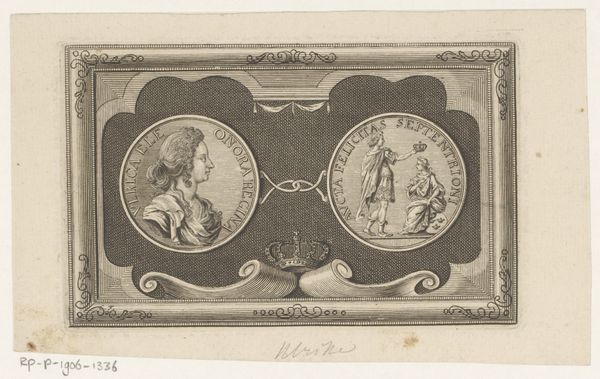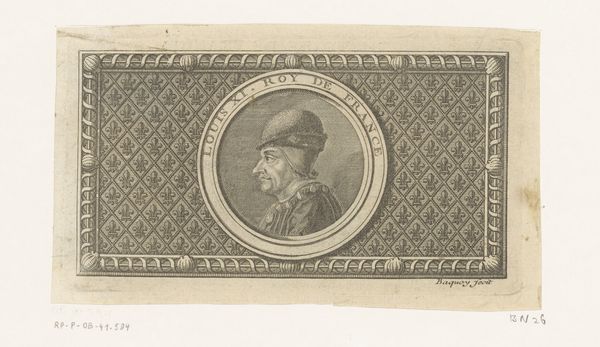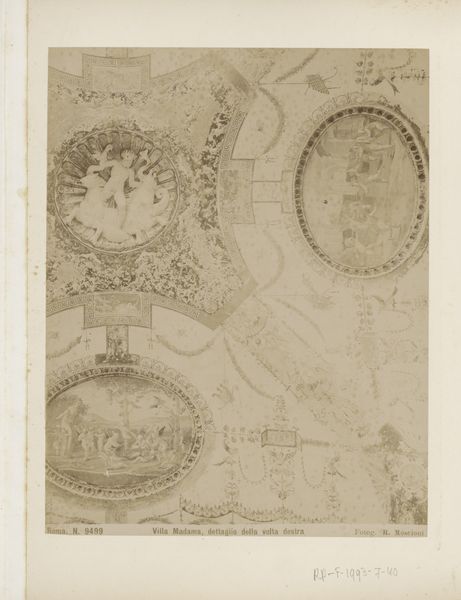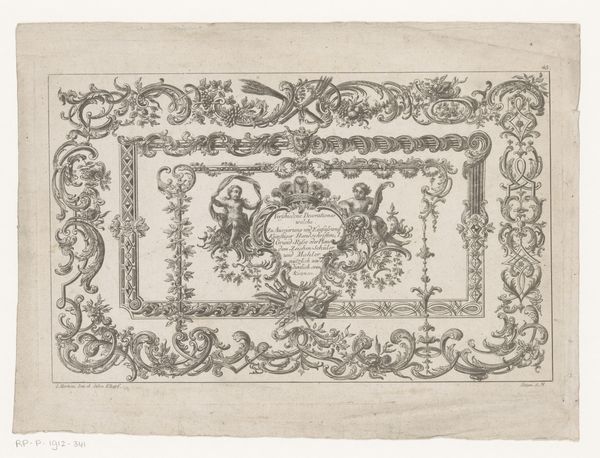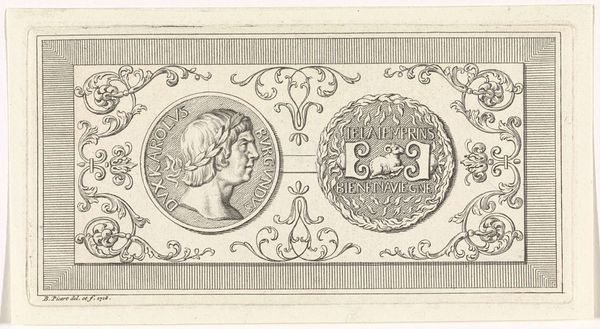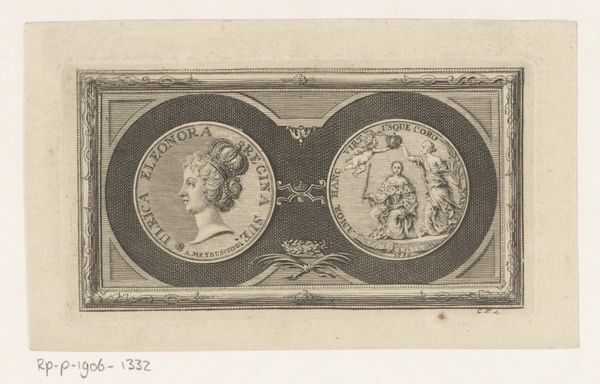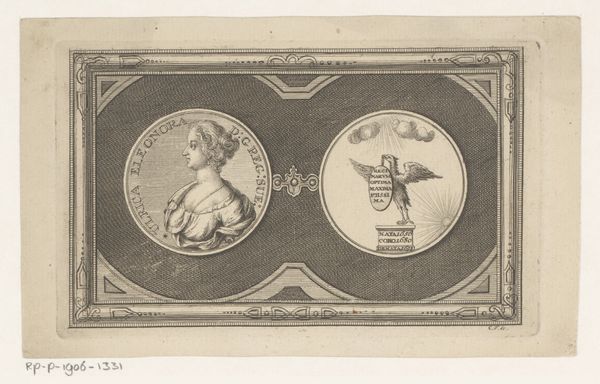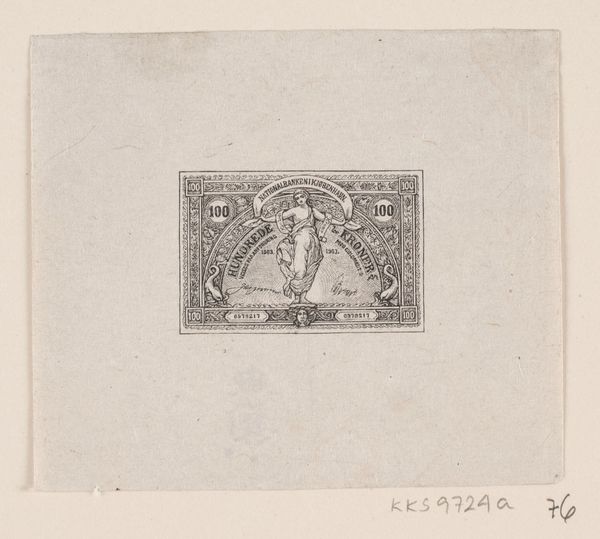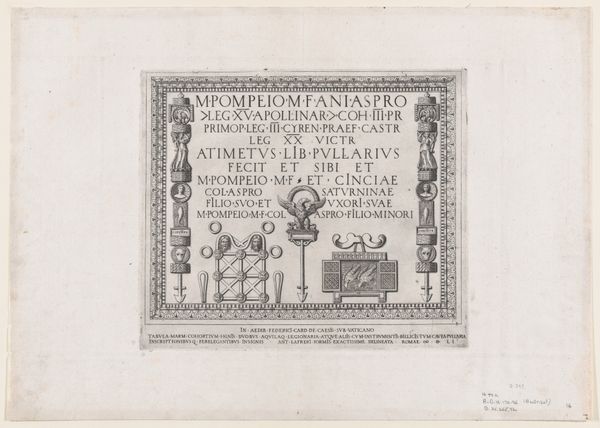
print, engraving
# print
#
classical-realism
#
figuration
#
line
#
cityscape
#
history-painting
#
engraving
Dimensions: 135 mm (height) x 215 mm (width) (bladmaal), 110 mm (height) x 180 mm (width) (plademaal)
This print, by O. Winstrup, is a ‘test piece’ made with a line-engraving machine. The material is paper, the medium is ink, but the real story is the machine itself. Look closely, and you’ll see that the image is entirely composed of lines, all mechanically ruled. It’s an elaborate demonstration of what the device could do. You see architectural views, ornamental borders, and a central allegorical figure, all rendered with the same implacable precision. The effect is quite uncanny. We often think of prints as being easily reproducible. But before industrialization, they were still made by hand – a highly skilled, painstaking process. Here, Winstrup sought to introduce a kind of automation. He wasn’t necessarily trying to eliminate the human touch, but rather to augment it, pushing the boundaries of what printmaking could achieve. This speaks to the wider social context of the industrial revolution, with its blend of aspiration and anxiety about the role of the machine.
Comments
No comments
Be the first to comment and join the conversation on the ultimate creative platform.
